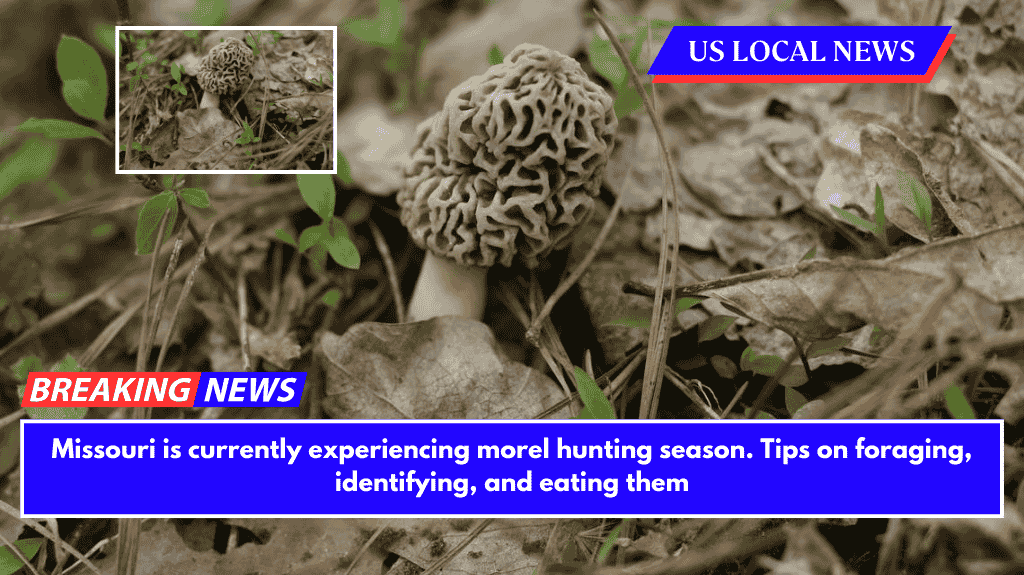Morels are odd-looking, elusive, and back in season in Missouri.
The wild, edible mushrooms only grow from late March to early May under specific temperature and soil moisture conditions, and their earthy colors blend in with the forest undergrowth where they spawn, according to the Missouri Department of Conservation. For many who participate, looking for them every spring is a family tradition, an ongoing obsession, or a special occasion.
“They are common but notoriously hard to locate against the forest floor,” according to the Missouri Department of Conservation.
Here’s how to begin collecting morel mushrooms if you live near them or are traveling to find them.
Where to Forage for Morels
According to the Missouri Department of Conservation, most hunters keep their favorite foraging spots secret.
“Morels are treasured for their delicious flavor and the fun of the hunt, which is often a family tradition spanning generations,” the department’s field guide reads.
The Great Morel blog maintains a yearly map where foragers can submit the locations of their sightings, but most only provide city and zip codes. With the exception of a single sighting in northern California in February, they were all reported in March.
According to Josh Hartwig, media specialist for the Missouri Department of Conservation and host of “Discover Nature” on KRCU, morels grow in 24 to 48 hours, which means a promising spot could be bare one day and full the next.
“Look for them in moist woods, river bottoms, and on south-facing slopes every few days or so,” he told the radio station KRCU. “They’re often found near dead elm trees, in old orchards or burned areas.”
According to the Missouri Department of Conservation, they typically emerge when temperatures drop to the 50s and rise to the low 70s, peaking around the time lilacs bloom.
How to identify the mushrooms
According to the Missouri Department of Conservation’s field guide, the mushrooms come in a variety of species and are all hollow-stemmed with a cone-shaped cap marked with definite pits and ridges that resemble a sponge, pinecone, or honeycomb.
Morels must be thoroughly cooked before they can be safely eaten, but there are many “false morels” growing in Missouri that are dangerous to consume regardless, according to officials.
According to the department, they usually have “wrinkled, floppy-looking, irregular caps” rather than the morel’s cone shape. Instead of pits and ridges, they are distinguished by folds, lobes, and wrinkles. Morel stems are always hollow, but a chambered or solid stem is also a giveaway, according to officials.
Foragers who want to be certain about their finds can consult the Missouri Mycological Society’s list of experts.
Cooking them
Alan Bergo, a Minnesota chef with a long history of working with morel mushrooms, wrote that people frequently go overboard when cleaning them. He explained that there is no need to soak or boil them. Instead, he suggests rinsing them in cold water and drying them with paper towels.
“If the mushrooms are from sandy soil or it’s rained recently, I’ll dehydrate them as they’re hard to clean,” the author stated.
He stated that the three varieties—blondes, greys, and blacks—have distinct textures and tastes. Greys are small and dense, whereas blondes are thinner and become crumbly as they mature. Blacks, which begin as a creamy color, are the most commonly harvested commercially, he explained.
In his recipes, Bergo suggests browning, sautéing, or stewing them before incorporating them into sauce. Another common method is to dry them in a dehydrator and store them later.
True morels, when undercooked, can be just as dangerous as false ones. According to the Montana Department of Public Health and Human Services, 51 people became ill after eating raw or partially cooked morels at a Montana restaurant in spring 2023. Officials reported that three people were hospitalized, and two died.
“Those who became ill experienced symptoms including diarrhea, nausea, and stomach pain,” according to the department. “People became sick shortly after consuming the morels, typically within one hour after the restaurant meal.”

















